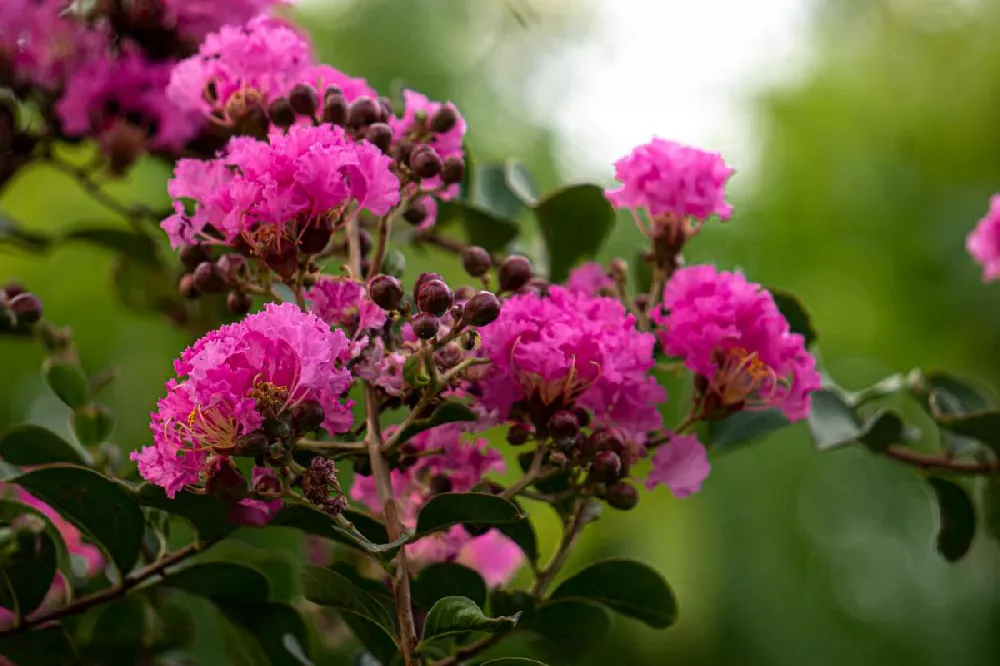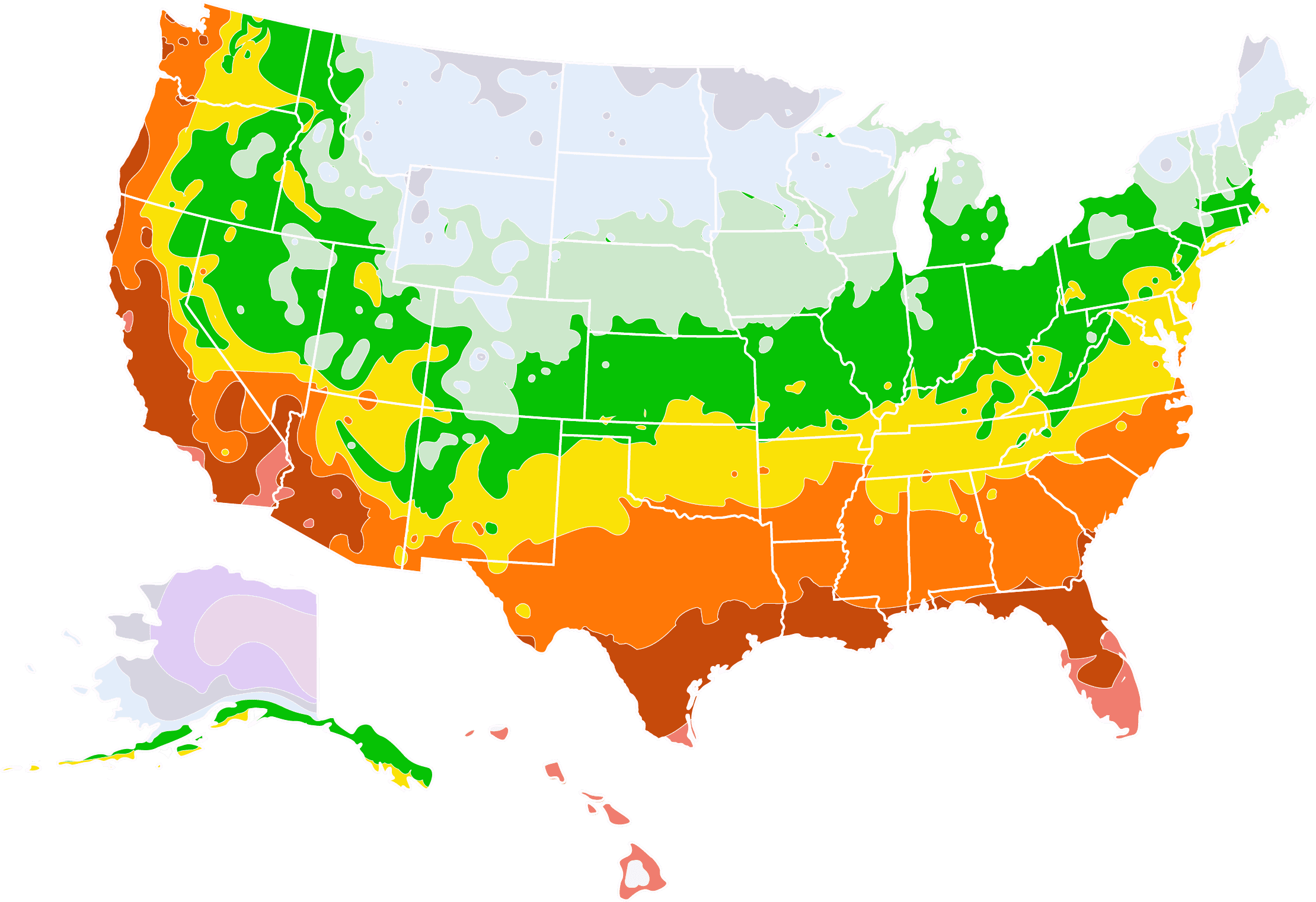- Home >
- Shrubs and Bushes >
- Black Diamond® Crape Myrtle-Purely Purple™
Black Diamond® Crape Myrtle—Purely Purple™ for Sale - Buying & Growing Guide
The Purely Purple™ Black Diamond® Crape Myrtle, Lagerstroemia indica, is an unusual cultivar that has several eye-catching features. Throughout the summer, masses of bright purple blooms make this shrub a centerpiece in the garden. Equally attractive is the bush's purple-black foliage, which provides interest from spring to fall. It's a flexible shrub that can be allowed to grow to its maximum height of 10 to 12 feet or can be cut down each winter and allowed to regrow in the spring. The latter works especially well in the northern parts of its range, where the winter cold may cause dieback, but where the plant can still be grown as a perennial. It makes a stunning hedge when planted in rows and is an attractive plant in mixed borders and garden beds. Here are a few more reasons to plant one or more in your garden:
- Can be grown in a container and used as a patio planting.
- Highly resistant to mildew.
- Low maintenance and drought-resistant.
Enter your zip code to find nearby stores that may carry this plant.
Plant Care
Sunlight

Plant your Black Diamond® Crape Myrtle in full sunlight, six or more hours of direct light a day.
Watering
Water your crape myrtle whenever the soil two inches below the surface is dry—about once a week.
Fertilizing

Fertilize your crape myrtle throughout the growing season with a balanced, slow-release product.
Planting and Care
Planting instructions
Site your Purely Purple™ Crape Myrtle in soil that drains well and receives at least six hours of sunlight a day. Unpot the shrub and tease out any encircling roots, which can girdle the plant and slowly kill it. Dig a hole that’s as deep as the root ball and twice as wide. Place the tree in the hole, spreading out the roots. Holding it upright and steady, fill in around the roots with topsoil, tamping down as you go to eliminate air pockets. Water thoroughly. Apply a two to three-inch layer of organic mulch such as bark chips around the root zone to conserve moisture and hinder weed growth but keep it from touching the trunk to avoid problems with rot.
Watering and nutrients
When newly planted, water your crape myrtle every few days until you see robust new growth. Then, taper back your watering to once a week, giving your shrub about an inch of water every time. A mature shrub will only need supplemental watering during periods of drought or very hot weather. To tell if your shrub needs water, dig down two inches near the roots; if the soil is dry there, give your crape myrtle a drink. Fertilize in spring and summer with a slow-release, balanced product designed for landscape trees and shrubs, following package directions.
Pollination
Pollinating insects such as bees are attracted to the vibrant purple flowers of this crape myrtle. Pollinated flowers lead to small seed pods that contain brown seeds, which are a popular food source for songbirds and other animals.
Pruning
Prune out any dead, diseased or broken branches whenever you see them. When the shrub is young, shape it by removing all but about four or five primary trunks and, if you wish, the branches on the lower half of the tree. If you live in the northern part of your crape myrtle’s range, you can prune the entire shrub back to the ground in late fall, since it will come back in spring. Flowers appear on new wood; so, you will not sacrifice blooms if you do this.
Pests and diseases
The Purely Purple™ Crape Myrtle is a relatively trouble-free plant, with few pests or diseases. Insects that may appear on your bush include aphids and Japanese beetles. Traps for the latter are available at well-stocked garden centers. Consider releasing beneficial insects such as ladybugs and lacewings if you have continued problems with aphids. Diseases that may affect crape myrtles include powdery mildew and Cercospora leaf spot. Allow for sufficient room around your shrub for good air circulation and avoid wetting the leaves when watering to minimize the chances of these fungal diseases.
Achieving maximum results
One way to achieve maximum results with your Purely Purple™ Crape Myrtle is to grow it in a container. This allows you to use it as a patio planting or place it on either side of a front entryway. It also means that gardeners who live in colder regions can grow this lovely plant and bring it inside when winter arrives. Choose a container that is about twice as large as the root ball with good drainage in the bottom. Using a good-quality potting mix, plant it as per our directions above. Note that you may need to water it more often than you would if it were planted in the ground. If your temperatures are predicted to go below 0 degrees Fahrenheit, bring the plant to a protected spot—such as a garage or basement.
FAQs
How big does the Purely Purple™ Crape Myrtle get?
When well cared for, this cultivar can reach as tall as 10 to 12 feet, with a mature width of six to eight feet. If grown in a container, it is likely to remain smaller in height, as the roots will be constrained by the pot that they're in.
Where can I grow the Purely Purple™ Crape Myrtle?
This is a heat-loving plant that can be grown throughout the southern states and as far north as the Pacific Northwest. It can also be grown on the Eastern seaboard up to coastal Massachusetts. It is hardy in USDA hardiness zones 6 through 10 and can handle temperatures down to 0 degrees.
How is the Purely Purple™ Crape Myrtle best used in my garden?
The Purely Purple™ Crape Myrtle is a great choice for mixed perennial borders and mixed shrub borders or beds. It will make a fine specimen shrub, especially if planted in multiples of three or five. It's a good choice for a foundation plant, as long as you leave three to four feet between the shrub and any building you are planting it near.
Compare Similar Products
You can't add more Product Name - Product size to the cart.
OK







